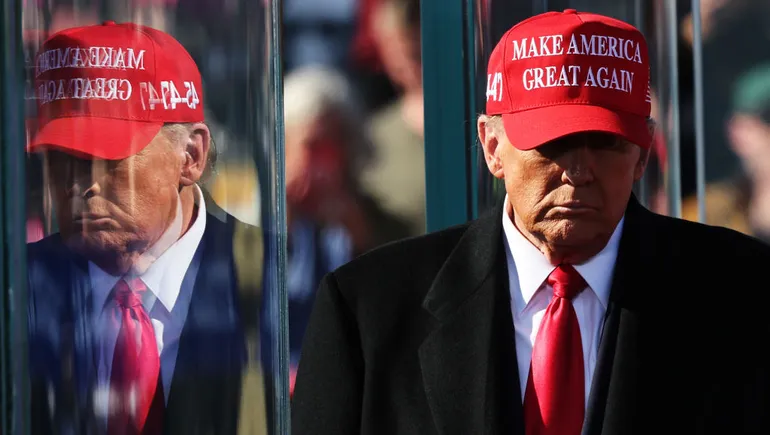A Second Trump Administration: What it Means for the Retail Industry
Introduction
With a potential second Trump administration looming, analysts predict a wave of economic volatility that could drastically affect U.S. retailers and consumers. The 2024 election has reignited discussions around tariffs, inflation, interest rates, and regulatory policies—all of which could reshape the retail landscape. Key figures in the retail and financial sectors provide a glimpse into how these changes may impact the industry’s financial health, pricing strategies, and consumer spending power.
1. The Tariff Dilemma: A Double-Edged Sword
One of the primary concerns for a second Trump administration is the potential reimplementation or increase of tariffs on imports, especially those from China. Analysts like Neil Saunders, Managing Director at GlobalData, describe the potential tariff policies as a “mixed bag” for retailers. While Trump’s trade policies aim to protect domestic manufacturing, they may also create significant challenges for retailers reliant on imported goods.
Wells Fargo economists Jay Bryson and Michael Pugliese predict that a 10% across-the-board tariff on U.S. trading partners and a 60% tariff on China could contribute to a “stagflationary shock” in 2025. According to their analysis, these tariffs would drive core consumer price index (CPI) inflation up from 2.7% to 4%, impacting both retail businesses and consumers alike. Retailers may struggle to absorb these costs and could be forced to pass them on to consumers, increasing prices on everyday items and potentially curtailing consumer spending.
2. Impact on Consumer Goods and Pricing
The National Retail Federation (NRF) warns that tariffs could lead to steep price hikes on essential consumer goods. The NRF estimates that clothing prices could rise by $13.9 to $24 billion, toys by $8.8 to $14.2 billion, furniture by $8.5 to $13.1 billion, household appliances by $6.4 to $10.9 billion, and footwear by $6.4 to $10.7 billion annually. Such increases could significantly reduce consumers’ spending power, with an anticipated loss of between $46 billion and $78 billion in consumer spending each year.
For budget-conscious consumers, dollar stores—already a crucial resource for affordable goods—might struggle to maintain low prices in the face of rising import costs. However, larger retailers like Walmart and Target, with diversified supply chains and stronger financial resilience, may be better positioned to weather the impact of tariffs. These companies could even capture market share from smaller competitors struggling with increased operational costs.
3. Interest Rates and Housing Market Sensitivity
Despite Trump’s election promises of lower interest rates, experts argue that the Federal Reserve’s rate-setting authority remains beyond the president’s control. Economic shifts under his policies, however, could indirectly influence the Fed’s rate decisions. The potential for inflation induced by tariffs may prompt the Federal Reserve to reconsider rate cuts, as Saunders notes. Higher interest rates would directly affect consumer loans and mortgages, slowing housing market activity—a key driver for retail sectors such as home goods.
As Saunders highlights, elevated rates could also discourage homeownership and related retail spending on items like furniture and home improvement goods. This trend may particularly harm retailers dependent on the housing market, affecting their profits and growth.
4. Tax Cuts and Their Mixed Outcomes
Renewing the tax cuts from Trump’s first term could offer short-term relief to consumers and retailers, potentially increasing disposable income and stimulating retail spending. However, experts warn that these cuts also carry significant risks, such as widening the federal deficit and driving up inflation. For consumers, increased inflation can erode any benefits from tax savings, limiting their long-term purchasing power and potentially dampening retail growth over time.
5. FTC’s Approach to Mergers and Acquisitions
A second Trump administration might also bring shifts in regulatory stances, especially at the Federal Trade Commission (FTC). Trump’s administration could ease regulations on mergers and acquisitions, creating a favorable environment for retail consolidation. Saunders notes that while merger approvals under the Biden administration were restrictive, Trump’s policies may facilitate consolidation for retailers and allow large players to absorb smaller competitors.
Deals blocked by the FTC in 2023, such as Tempur Sealy’s acquisition of Mattress Firm and Tapestry’s proposed merger with Capri, might gain approval under a less restrictive FTC. This regulatory shift could lead to fewer competitors and greater market control by big players, which might reduce competitive pricing options for consumers but increase profitability for larger corporations.
6. Future Projections: Incremental Yet Significant Change
The economic changes introduced by a second Trump term are likely to unfold gradually. Saunders underscores that a Trump presidency will not be an immediate game-changer for the retail industry but will alter the “gradient” and tone of policies that retailers must navigate. Changes in tariffs, tax policies, and regulatory approaches may push retailers to adapt their strategies to mitigate potential risks and capitalize on emerging opportunities.
Conclusion
The possibility of a second Trump administration introduces both challenges and potential benefits for U.S. retailers. Increased tariffs, inflationary pressures, and regulatory shifts may strain smaller retailers and impact consumer spending power, especially in price-sensitive segments. Conversely, larger corporations may find opportunities for growth through consolidation and tax cuts.
For retailers, adaptability will be key. Those who can optimize supply chains, absorb or shift costs effectively, and adjust to changing consumer demands may not only survive but thrive in this potentially volatile landscape. In any case, navigating a Trump presidency’s policies requires strategic planning and a clear focus on maintaining value for consumers, who will likely face their own financial pressures in the years ahead.




